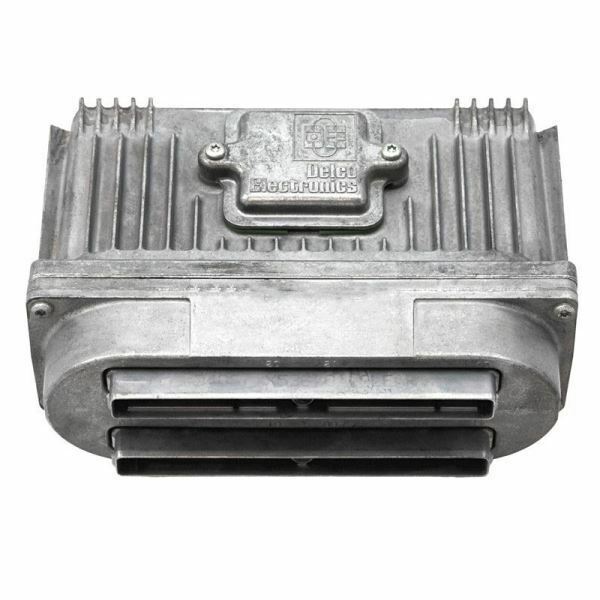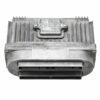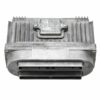The Brain of Your Engine: Restoring Performance to Your 1997 GM Vehicle
The Powertrain Control Module, or PCM, is the central command center for your vehicle’s engine and transmission. In your 1997 Chevrolet Monte Carlo, Pontiac Grand Prix, or Buick Regal, this sophisticated computer manages critical functions like fuel delivery, spark timing, transmission shift points, and emissions controls. When the PCM begins to fail, it can lead to a cascade of frustrating and often difficult-to-diagnose problems, from a simple check engine light to a car that won’t start at all. This replacement module is the definitive solution to restore your vehicle’s original performance and reliability.
Is Your Vehicle Showing Signs of a Faulty PCM?
A failing PCM doesn’t always result in a complete breakdown. Often, the symptoms start small and grow progressively worse. If you’re experiencing any of the issues below, a faulty control module could be the culprit. Ignoring these signs can lead to further damage to other components, like the catalytic converter, and poor fuel economy.
From the Diagnostic Bay
We once had a 1997 Pontiac Grand Prix with the supercharged 3.8L come in on a tow truck. The owner had already replaced the fuel pump and ignition coils trying to solve an intermittent no-start issue. After hours of diagnostics, we traced it back to a failing PCM that would lose communication with the scan tool when it got hot. A quick swap with a correctly programmed module like this one had the car running perfectly in minutes. It’s a powerful reminder that the engine’s ‘brain’ can cause some very confusing ‘body’ problems that seem unrelated at first glance.
Common Symptoms of PCM Failure
- ✔ Persistent Check Engine Light (CEL) with communication-related trouble codes (e.g., U-codes) or multiple random codes.
- ✔ Engine stalling unexpectedly, especially after warming up.
- ✔ Noticeable decrease in fuel efficiency.
- ✔ Rough idling, engine misfires, or hesitation during acceleration.
- ✔ Harsh or erratic automatic transmission shifting, or getting stuck in one gear (limp mode).
- ✔ Complete no-start condition where the engine cranks but refuses to fire up.
- ✔ Failure to pass state emissions inspections.
The Direct-Fit Solution: A Pre-Programmed 1997 Monte Carlo PCM
This isn’t just an off-the-shelf part; it’s a comprehensive solution. We take a high-quality, tested Powertrain Control Module and program it specifically for your vehicle using your unique 17-digit Vehicle Identification Number (VIN). This process flashes the module with the latest, most stable software updates directly from General Motors. This critical step ensures that the PCM recognizes your car’s specific engine, transmission, and factory options, making for a seamless, plug-and-play installation. You get a component that is ready to install right out of the box, eliminating the need for an expensive trip to the dealership for programming.
Why VIN-Specific Programming is Essential
Within the 1997 model year, GM produced dozens of variations of vehicles like the Monte Carlo, Bonneville, and Camaro. The VIN tells the module whether your car has a 3.4L or a 3.8L engine, a supercharged or naturally aspirated setup, and what type of emissions equipment it has. Installing a module without the correct programming will, at best, cause a check engine light and poor performance, and at worst, prevent the vehicle from starting at all. Our VIN programming service guarantees that the module you receive is an exact match for your vehicle’s original factory configuration.
Installation and Compatibility
This module is a direct replacement for original part numbers 19109047 and 16227797. Installation is straightforward for a DIY mechanic with basic tools. Always disconnect the vehicle’s battery before removing the old module and installing the new one. It is also wise to inspect the wiring harness connectors for any corrosion or damage that could have contributed to the original failure.
This part will fit these makes and models with these options:
- ✔ BONNEVILLE 97 Electronic Control Module; (6-231, 3.8L), w/supercharged option
- ✔ CAMARO 97 Electronic Control Module; 6-231 (3.8L)
- ✔ EIGHTY EIGHT 97 Electronic Control Module; (6-231, 3.8L), w/supercharged option
- ✔ FIREBIRD 97 Electronic Control Module; 6-231 (3.8L)
- ✔ GRAND PRIX 97 Electronic Control Module; 6-231 (3.8L), w/supercharged option
- ✔ LUMINA CAR 97 Electronic Control Module; 6-207 (3.4L)
- ✔ MONTE CARLO 97 Electronic Control Module; 6-207 (3.4L)
- ✔ PARK AVENUE 97 Electronic Control Module; (6-231, 3.8L)
- ✔ REGAL 97 Electronic Control Module; (6-231, 3.8L), w/supercharged option
- ✔ RIVIERA 97 Electronic Control Module; (6-231, 3.8L)
Frequently Asked Questions
What information do I need to provide for programming?
After you complete your purchase, you will need to provide us with your vehicle’s 17-digit VIN (Vehicle Identification Number). We cannot ship your part until we have this information to program it correctly.
Is any additional programming required after installation?
No. This module arrives fully programmed to your VIN and is ready for installation. In most cases, it is a true plug-and-play part. Some vehicles may require a security relearn procedure, which can typically be done without special tools by following a simple key-cycling sequence.
Where can I find my VIN?
Your VIN can be found on a metal plate on the driver’s side of the dashboard (visible through the windshield), on the driver’s side door jamb sticker, and on your vehicle’s registration and insurance documents.
Is this part difficult to install?
For most of the listed GM vehicles, the PCM is located in the engine bay and is accessible with basic hand tools. The process typically involves disconnecting the battery, unplugging the electrical connectors, and unbolting the module. It is a manageable job for a confident DIYer.
Will this fix my check engine light?
If the check engine light is caused by a faulty PCM, then yes, this part will resolve the issue. However, if the light is on due to other failing sensors or components (like an oxygen sensor or EGR valve), those issues will need to be addressed separately.


